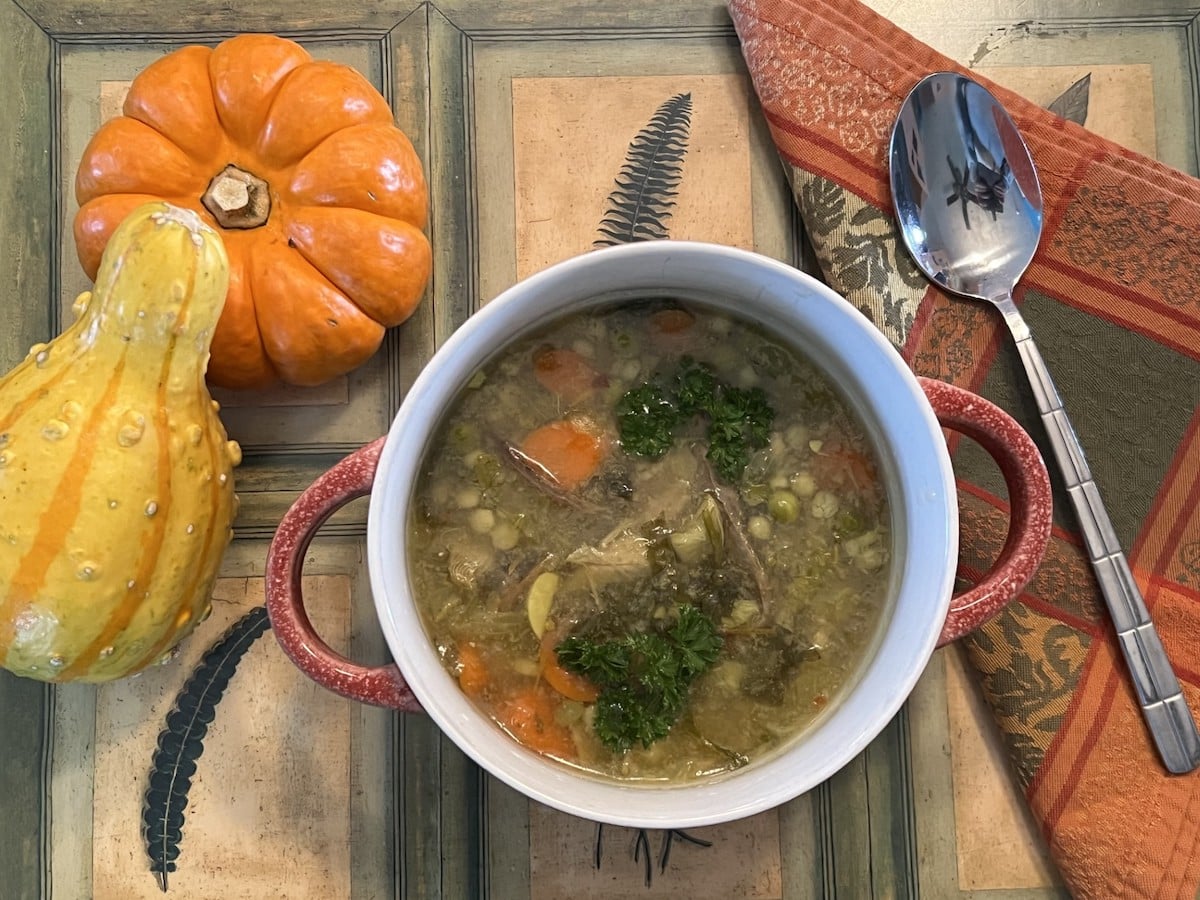
Share this post!
One of my most visceral memories of being in an elementary school cafeteria was when the principal of our school decided to sit next to me and my friends at lunch. Giddy from being one of the chosen few, I peered over at his tray. Right next to his milk carton was a giant pepper shaker. And no salt. He must have seen my confusion because he looked straight at me and said, “That used to be a salt shaker. But my doctor wants me to stay away from it, so I use pepper instead.”
My elementary school principal isn’t the only one who’s salty about doctors taking away their salt shakers. When used in cooking, salt brings out the flavor of its counterparts. It’s like the friend who brings out all the best qualities in their friend group. Definitely something worth having around.
But why does salt get such a bad rap?
It’s All About The Ratio
What my principal’s doctor was advising likely had to do with the link between high sodium intake and high blood pressure. Since salt is our main source of sodium, it usually becomes the main culprit when blood pressure is of concern.
Sodium is essential for muscle contraction, nerve impulses, mineral balance, and hydration. It works synergistically with potassium to maintain fluid balance in the body. Thus, the problem often is not simply the amount of sodium a person consumes but rather their ratio of sodium to potassium intake. According to a 2009 study, it’s ideal to consume three times the amount of potassium to sodium, or 3:1. In a standard American diet, we consume much more sodium than potassium. According to a 2011 study, the optimal range of sodium intake per day for the best health outcome is 4,000 – 5,990 milligrams.
So how can we change our ratios? Oftentimes, it’s a combination of decreasing highly processed foods, which sneak in a lot of sodium and increasing potassium-rich foods. Some foods high in potassium include bananas, avocados, spinach, papayas, broccoli, and squash.
Salt’s Lesser-Known Qualities
Have you ever wondered why sports drinks like Gatorade are so high in sodium? It’s because it’s so essential to our hydration! In fact, water follows salt. And since sodium works with potassium to hydrate, using salts with trace minerals such as potassium can bolster our hydration naturally. Sodium, magnesium, calcium, and potassium are considered to be electrolytes, which help with muscle contraction and heartbeat regulation. To increase your hydration and trace mineral intake, consider adding a couple shakes of unrefined mineral salt to your water.
The chloride in salt stimulates stomach acid production, which prevents acid reflux and aids in absorption of nutrients such as iron, folate, zinc, vitamin B12 and calcium.
It also aids in building the immune system by increasing the capacity of macrophages, which help kill harmful microbes. Remember the phrase “adding salt to the wound?” Though salt alone may be too much, soaking a wound in water with 7% table salt can increase the effectiveness of wound healing.
Salt therapy – or halotherapy – can benefit skin problems, allergies, and respiratory conditions. Polish salt miners in the 1800s seemed to have robust immune systems and little to no respiratory issues. Some research has since emerged connecting it to acting as a decongestant or reducing inflammation. As a result, some people choose to expose themselves to salt rooms where they can inhale the salts.
Leaving Their Trace
Sodium, potassium, calcium, magnesium, phosphorus, iron, zinc, chromium, manganese, selenium, sulfur, copper, molybdenum, iodine, and chlorine are all essential minerals, with cobalt being “conditionally” essential. Minerals are considered “trace” when they are present in quantities of 5 grams or less. Since the body cannot produce minerals, it relies on food for its source. With the depletion of trace minerals in our soil, high-quality salts from the sea can support our complex mineral needs.
What About the Types of Salt?
Not all salts are created equal. They come in all different shapes (flaked, finely or coarsely granulated, etc.) and in different colors (from opaque to pink). Each has a different flavor, and cooks can have a heyday with the richness each type can bring to a dish.
If all salt comes from the ocean, why distinguish between sea salt and table salt? Sea salt is evaporated from current seawater, while other salts are taken from past seawater left in underground salt deposits.
But what about the nutritional differences? It often boils down to mineral content.
Refined salt is stripped from its nutrients, while unrefined salt keeps the mineral content intact.

Table salt is most commonly refined and iodized. In addition, many companies include additives in their products such as sodium silicoaluminate or sodium ferrocyanide for anti-caking. Iodine was first added to salt to combat iodine deficiencies. However, if fish and seafood are a routine part of your diet, you should already receive an adequate amount of iodine. Table salt has a fine texture, which can make it easy to use in cooking.
Fine sea salt contains a greater amount of trace minerals with a finer texture, making it a more nutritious alternative to table salt.
Kosher salt has coarser crystals and can often be used for seasonings. It has less mineral content compared to rock salt, which is considered one of the purest forms of salt.
What gives Himalayan pink salt its special hue is its trace amounts of magnesium, potassium, and calcium, and up to 80 more trace minerals.
Flor de Sal is often used as a finishing salt and is named in Portuguese for its resemblance to a flower.
Black and red salts like Hawaiian sea salt come from volcanic rock, which adds iron oxide to the salt.
Celtic Sea Salt ® is most similar to Himalayan pink salt in that it also contains over 80 trace minerals, and comes from the Celtic Sea. It’s known to be moist.
Flakey sea salt has less mineral content than other sea salts but is prized for its texture that is conducive to certain cooking methods.

Bringing Out the Flavor
Itching to expand your palate and your nutrient load with salt? Here are some recipes to consider:
- Flakey sea salt – Aromatic Eggs and Greens
- Smoked sea salt – AIP Ribs with Nightshade-free Cherry BBQ Sauce
- Fine sea salt – Creamy Chicken Piccata Skillet
- Himalayan pink salt – Kitchari
- Celtic Sea Salt® – Hot and Sour Stir-fried Cabbage
If you’ve found yourself feeling salty about hearing of its danger, consider taking another look and adding a little more flavor back into your life. Your body will thank you.
Learn more about the functions of salt and how it interacts with human biochemistry in Nutrition Therapy Institute’s Nutrition Therapist Master Certification program. Don’t wait, get started today!
Don’t want to back to school yourself but know someone interested in holistic nutrition or natural cooking? Great! Then, you can contribute to NTI’s mission of Creating Optimal Health Through Nutrition Education and make some extra cash in the process! Under our referral program, anyone can earn a $300 gift card of their choice for every new student referred to NTI!
About the author: Lisa (Driscoll) Lopes is a certified Nutrition Therapist Master through NTI’s Nutrition Therapist Master Program. Having studied journalism and vocal performance in undergrad, she enjoys using her voice to share the benefits of living a holistic, integrated lifestyle in writing. You can find more of her writing in the Baltimore Sun, Classical Singer Magazine, Capital News Service, and FOCUS blog.
Images:
- Close-Up Shot of a Wooden Spoon and Salt by Marek Kupiec from Pexels
- Close-Up Photo Of Himalayan Salt by monicore from Pexels
- Infographic by Lisa Lopes on Canva
Share this post!


















